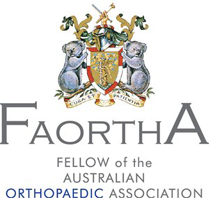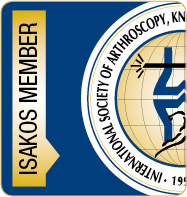Hip Pain

There are several causes for hip joint pain. The most common cause is osteoarthritis, which is wear and tear that worsens with age. Other causes of arthritis include rheumatoid arthritis or avascular necrosis, which is a condition in which the blood supply to the bone is damaged. Other causes of hip pain include bursitis, tendon tears as well as referred pain from the back or knee.
The Hip Joint
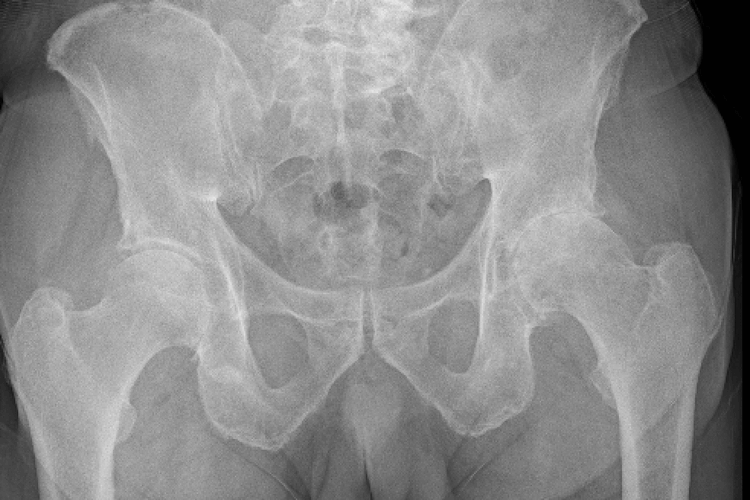
The hip joint is a ball-and-socket joint: the “ball” is the top part of the thigh bone (femoral head), and the “socket” or acetabulum is part of the pelvic bone, that the ball articulates with. When the arthritis is severe, the gristle between the two parts is worn away, resulting in “bone on bone” arthritis. The adjacent X-ray demonstrates that there is no space between the “ball” and “socket” of the left hip.
Total Hip Replacement
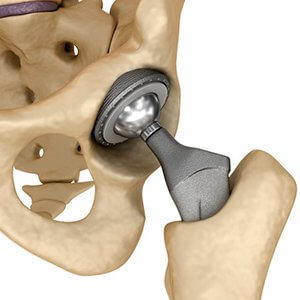
A total hip replacement (THR) involves replacing both the ball and socket parts of the joint. A THR is a surgical solution for patients who suffer severe hip pain and whose mobility is limited. Surgery is recommended once non-surgical options are no longer working. THR is a very successful operation.
Dr Balendra is a specialist hip surgeon and performs robotic hip replacements. He will discuss the specifics of the operation that is best suitable for your condition, including the location of the incision (scar) and the type of implants used. All the implants used, have a proven record of greater than 95% survivorship at 15 years, as recorded in the Australian National Joint Replacement Registry (AOA NJRR).
Further information about robotic hip replacement can be found here
The Operation
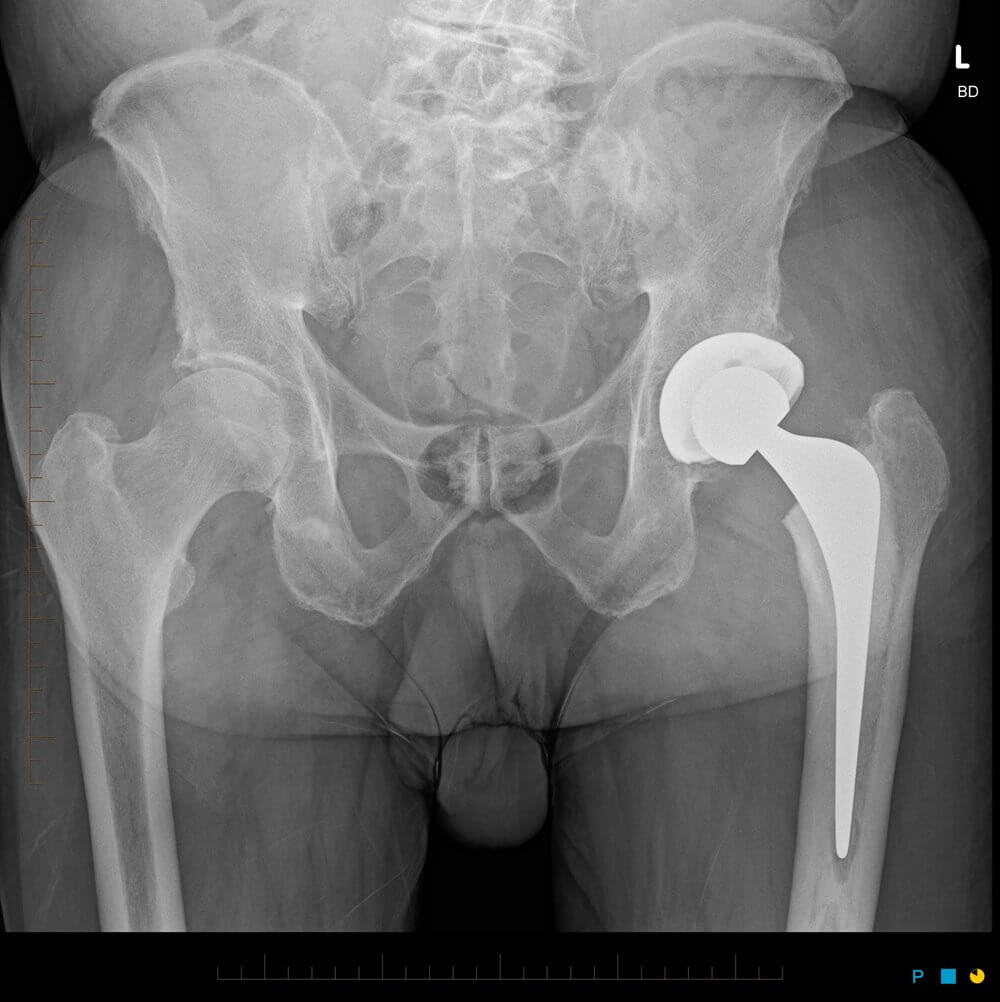
The procedure generally takes 1-2 hours, and is usually conducted under a Spinal Anaesthetic or a General Anaesthetic. You will be able to discuss the type of Anaesthetic used with the Anaesthetist prior to surgery.
With any operation there are complications. These include infection, fracture, dislocation, damage to nerves or blood vessels, leg length discrepancy, ongoing pain or stiffness or limp, blood clots (DVT/PE), other medical complications and need for revision surgery. In general these complications are not common, and Dr Balendra will discuss these risks with you in greater detail during your consult.
Recovery

On the day of surgery, with the aid of a physiotherapist, we will get you out of bed and walking around for a short period of time. The physiotherapist will also provide you with a set of exercises to help strengthen the hip joint. Most patients stay in hospital for 2-3 days after the operation.
It is important not to do too much too soon, so as to allow yourself to recover completely. Most patients will be back doing their day to day activity 4 weeks after surgery, but usually you cannot drive till 6 weeks after surgery, especially if you are still taking strong pain medication. Dr Balendra will advise you when you can resume heavier physical activity such as sport.

